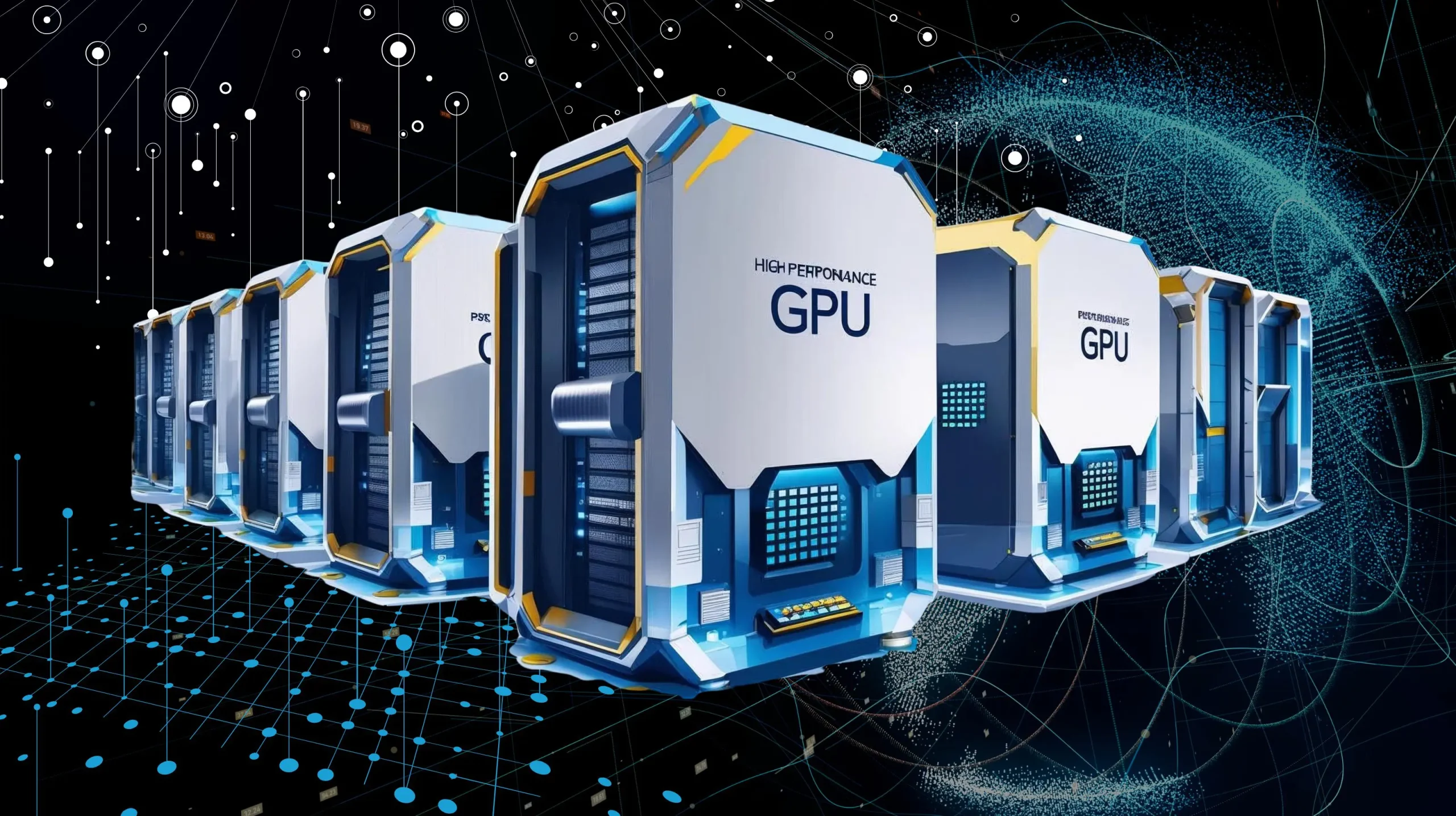
The increasing demand for intelligent automation, real-time analytics, and next-generation user experiences has made AI and machine learning central pillars of digital transformation. Yet, the shift from prototype to production at scale hinges on infrastructure that can keep pace with innovation. Dedicated GPU servers have become essential for organizations seeking to unlock the full potential of AI acceleration and data-driven insights, offering a blend of computational power, scalability, and operational reliability that traditional server models cannot match.
Key Takeaways
- Purpose-built for AI/ML: Dedicated GPU servers are engineered to handle computationally intensive machine learning, deep learning, and inference tasks, dramatically reducing training times and unlocking real-time analytics.
- Enterprise-grade hardware: Modern configurations integrate NVIDIA RTX GPUs, high-core-count CPUs, and NVMe SSDs, delivering performance, energy efficiency, and flexibility for a wide range of AI workloads.
- Scalability and flexibility: With multi-GPU options, rapid provisioning, and global deployment in strategic locations such as Los Angeles, Tokyo, and Hong Kong, organizations can scale resources in line with project needs.
- Security and compliance: Hosting in Tier 3+ data centers, with advanced DDoS protection and international compliance standards, ensures data sovereignty and robust operational security.
- Cost-performance optimization: Transparent pricing and tailored configurations enable organizations to balance budget with the technical requirements of demanding AI projects.
Technical Deep Dive: Architecture & Hardware Considerations
Dedicated GPU servers represent the intersection of high-throughput computing and advanced parallel processing. Unlike general-purpose CPU servers, GPU-accelerated platforms are architected with the specific demands of AI and machine learning in mind.Table: Example XLC Dedicated GPU Server Configurations
| Model | CPU | RAM | Storage | GPU | Max GPU/Cores | Price (USD/mo) |
| AMD EPYC 24 Cores | AMD EPYC 7402P | 64GB DDR4 ECC | 1 x 960GB NVMe SSD | 1 x RTX 4090 48GB | 4 x GPU | $559 |
| AMD EPYC 64 Cores | AMD EPYC 7B13 | 64GB DDR4 ECC | 1 x 960GB NVMe SSD | 1 x RTX 4090 48GB | 4 x GPU | $599 |
| AMD EPYC 32 Cores | 2 x AMD EPYC 7313 | 128GB DDR4 ECC | 1 x 960GB NVMe SSD | 1 x RTX 4090 48GB | 8 x GPU | $809 |
| AMD EPYC 128 Cores | 2 x AMD EPYC 7B13 | 128GB DDR4 ECC | 1 x 960GB NVMe SSD | 1 x RTX 4090 48GB | 8 x GPU | $879 |
Tip: XLC’s rapid provisioning and flexible scale-up options allow teams to align infrastructure closely with development cycles, supporting both experimentation and production-grade deployments.
Deep Learning & Parallel Processing: Why GPUs Are Essential
Modern AI models, especially deep neural networks, require immense parallel computation for tasks such as matrix multiplications and tensor operations. GPU architecture, built around thousands of CUDA and Tensor cores, is optimized for this parallelism, resulting in:
- Faster Model Training: High-throughput training for frameworks like PyTorch and TensorFlow.
- Efficient Inference: Real-time performance for applications in recommendation engines, fraud detection, and autonomous systems.
- Large-scale Data Handling: Ability to process massive datasets with minimal latency and high memory bandwidth.
Table: GPU Server Feature Comparison
| Feature | CPU Server | GPU Server |
| Processing Type | Sequential | Parallel (thousands of cores) |
| AI/ML Training Speed | Moderate | 10x-50x faster |
| Deep Learning Frameworks | Limited | Optimized (CUDA, TensorFlow, PyTorch) |
| Memory Bandwidth | Standard | High |
| Scalability | Limited | Multi-GPU, cluster-ready |
| Energy Efficiency | Lower for AI/ML | Higher for parallel workloads |
Operational Advantages: Security, Network, and Reliability
- Global Connectivity: XLC’s data centers are connected to Tier 1 carriers and major Asia-Pacific networks, offering ultra-low latency for cross-border AI deployments.
- Redundancy & Uptime: Dual power feeds, N+1 cooling, and 100% uptime SLAs reduce operational risk, critical for production AI applications.
- Compliance: Certifications such as ISO 27001, SOC2, and PCI DSS allow organizations in regulated sectors (finance, healthcare, SaaS) to meet strict governance requirements.
- DDoS Protection: Always-on mitigation protects sensitive AI workloads from disruption.
Practical Use Cases: Industry Applications
- Healthcare: Accelerate genomic analysis, radiology imaging, and drug discovery pipelines.
- Finance: Power real-time risk analysis, anomaly detection, and algorithmic trading with low-latency inference.
- Media & Entertainment: Enable high-resolution video rendering, real-time streaming, and special effects production.
- Scientific Research: Run complex simulations for climate modeling, astrophysics, and molecular dynamics.
- Autonomous Systems: Support sensor fusion, path planning, and real-time decision-making for robotics and vehicles.
Tip: For teams working with large LLMs, computer vision, or natural language processing, dedicated GPU servers offer the flexibility and horsepower required for iterative, data-intensive projects.
Key Considerations for Selecting a Dedicated GPU Server
- GPU Model & Memory: Match the GPU (RTX 4090, A100, A6000, etc.) to your workload size and complexity.
- CPU and RAM: Ensure CPU is not a bottleneck and there is sufficient ECC RAM for data processing.
- Network Bandwidth: Opt for 10G or higher interfaces for distributed training and large-scale data ingestion.
- Storage: Fast NVMe SSDs reduce data pipeline bottlenecks during model training and inference.
- Framework Support: Verify compatibility with your preferred AI/ML libraries.
FAQs: Dedicated GPU Servers for AI and Machine Learning
What are the main benefits of using a dedicated GPU server for AI? Dedicated GPU servers deliver superior parallel processing, accelerating both training and inference for AI models. This leads to faster development cycles, improved model accuracy, and efficient resource usage.How quickly can XLC provision a dedicated GPU server? Most in-stock models can be provisioned within one hour, supporting rapid scale-up for project launches or traffic spikes.Are there compliance and security guarantees? Yes. XLC data centers are certified under ISO 27001, SOC2, PCI DSS, and provide robust DDoS mitigation and physical/logical security controls.Can I scale my infrastructure as my AI project grows? Absolutely. XLC offers flexible configurations and multi-GPU options, allowing organizations to expand resources in line with project requirements—without long-term commitments.How do I select the right GPU configuration for my workload? Consider the complexity of your AI models, the size of your data, and your preferred frameworks. XLC’s technical team can provide recommendations tailored to your specific use case.
Conclusion
Dedicated GPU servers are transforming the way organizations approach AI and machine learning, unlocking new possibilities for innovation across industries. With enterprise-grade hardware, global connectivity, and robust security, platforms like those offered by XLC provide a foundation for rapid experimentation, scalable deployment, and operational excellence in the era of intelligent automation. For teams seeking to accelerate AI initiatives and turn data into competitive advantage, dedicated GPU servers represent a strategic investment in future-ready infrastructure.
